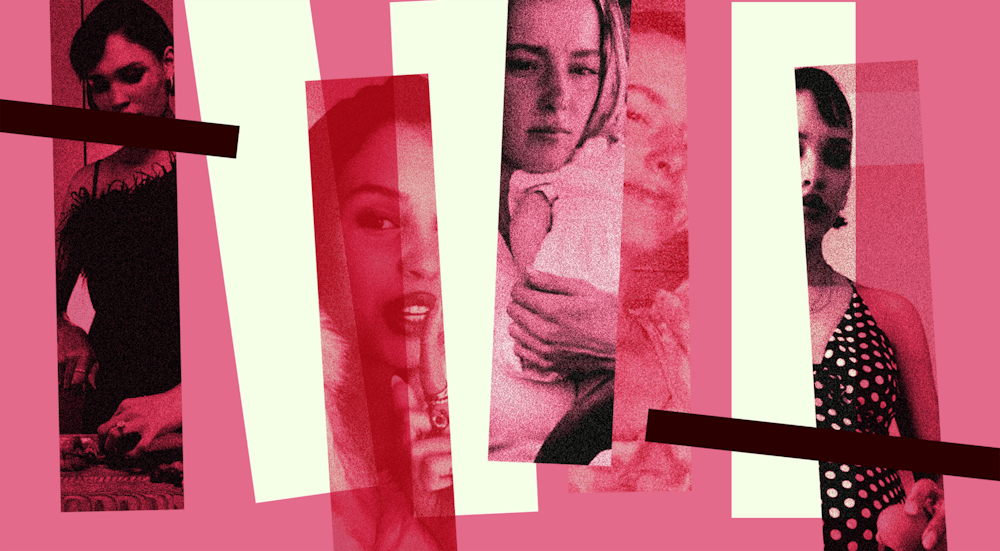In a TikTok video, Nara Smith, a former fashion model, shows off her pregnant belly while making granola from scratch. With her pink–ribboned top and a backdrop of homemade treats, Smith embodies a growing trend on TikTok: the glamorous, modern housewife.
In this glorified, luxurious version, Smith’s lifestyle is more than pleasing—it’s attractive. She is a model, married to another model, and has the financial means and availability necessary to make various foods from scratch while being 22 and having three kids.
Observing a woman who looks beautiful and feminine, with her sole “job” being a mother and wife, has led to Smith amassing over 386.7 million likes on TikTok. While Smith’s lifestyle reflects this rising culture, she didn’t start it. Many Gen Z women are rejecting the corporate ladder and embracing the stay–at–home girlfriend or wife lifestyle as an aspiration. The only difference? Unlike our grandmothers, they document all of this on social media.
Scrolling through TikTok, you’ll find the #stayathomewife hashtag has 245 million views, while #stayathomegirlfriend has nearly 290 million. These videos are often similar, featuring mostly white women doing daily vlogs of skincare routines, Target runs, cooking, cleaning, and occasional yoga and Pilates sessions. The common thread is their focus on devoting attention to their husband and their relationship.
Viral videos and rising trends reveal an emerging culture that is steadily gaining attention. This generation of privileged, predominantly white women mirrors the current wave of anti–work sentiment that young people are increasingly vocal about. What is driving Gen Z women, who have unprecedented access to information and resources, to embrace a 1950s housewife ideal?
The answer is simpler than many may think. The traditional wife lifestyle promises to unburden women from financial stress and the well–known “double shift” that women face—working to earn money while also being responsible for unpaid domestic labor. In an interview with Street, Sophie Lewis, author of Abolish the Family, says, “The promise of the tradlife is genuinely seductive to women who, rightly, hate the endless grind.”
The trad subculture seems to address a problem that feminism hasn’t fully solved: the tough choice women face under capitalism. If a woman wants to focus on her career, she might feel like she has to give up on relationships, intimacy, motherhood, and love. Some women find the tradwife lifestyle appealing because it offers a break from the pressure of balancing work and personal life. It’s almost like a rebellious choice that rejects the idea of having to do it all.
Hannah Neeleman, known for her TikTok account Ballerina Farm, has become a prominent figure in the traditional wife trend. She shares picturesque views of the Utah countryside and her fulfilling routine as a wife and mother of eight. With 9.4 million followers on Instagram, 9.1 million on TikTok, and 1.6 million on YouTube, her account portrays an idealized family life. However, beneath this perfect image, signs of underlying issues start to appear.
In a recent interview published by The Times, it was revealed that Neeleman frequently suffers from such severe exhaustion that she sometimes stays in bed for a week, and she gave birth to six of her eight children at home without pain relief. Shockingly, Neeleman also abandoned her career as a professional ballerina at The Juilliard School, the number one dance school in the United States, to become a tradwife.
Neeleman’s story illustrates how Gen Z women are striving for an idealized paradise—one that is, in reality, largely a social media fantasy—and are starting to envision a perfect life that may not fully exist. In fact, a housewife’s life is far from a dream.
For women in a capitalist society, escaping from “work” often feels impossible. Whether it’s managing groceries, responding to emails, working out several imes a week due to pressure to stay fit, or juggling these tasks with unequal childcare responsibilities, the burden of work remains constant.
“In terms of cultural impact, I believe the #tradwife phenomenon is deeply regressive,” says Lewis. Economically, however, she is skeptical about its long–term effects. Many aspiring tradwives may not be able to exit the formal job market, as most couples today simply can’t afford to support a full–time, unpaid housewife.
According to Lewis, on the flip side of the tradwife image is the trope of the “unfuckable” cat lady or the sad girlboss—women who, despite their financial success, remain childless and often appear resentful. This stereotype contrasts with the tradwife ideal, highlighting a different set of cultural expectations and pressures. These women are depicted as having achieved career success but are seen as missing out on traditional markers of fulfillment like family life, leading to a narrative of loneliness or dissatisfaction. “That supposedly frustrated figure is just as central to the tradwife cult as is the figure in high heels and an apron,” says Lewis.
In 1967, nearly half of mothers stayed at home. This number decreased significantly as the second–wave feminist movement in the 1970s led to a surge in college enrollment (with women surpassing men) and an increase in women entering the workforce. By 1999, only 23% of mothers stayed at home. Although this percentage has fluctuated with economic conditions and labor market changes, it has remained around 25% for decades.
Many of these women stay home for economic reasons. With high daycare costs and limited availability, staying home is often a last resort for many families. Our grandmothers and mothers who have spent years managing a household might find it frustrating to see TikTok portray these tasks as easy and glamorous. But in the end, no matter if they are wearing egg aprons or a Lululemon set, women are exhausted and vulnerable both inside and outside the house.

